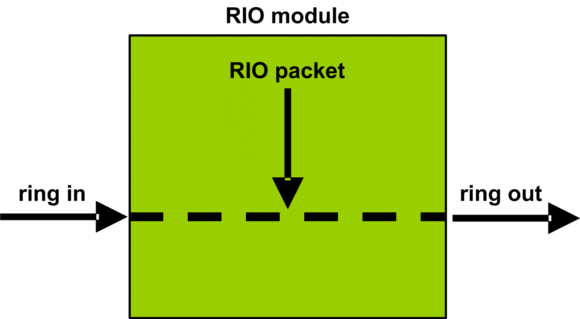Introduction
RIO modules constitute a network junction. An RIO module joins ring traffic with RIO module traffic.
Each junction presents the queueing point, which can add delay — or jitter — to the system. If 2 packets simultaneously arrive at a junction, only 1 can be immediately transmitted. The other waits for a period referred to as “one delay time” before it is transmitted.
Because RIO packets are granted priority by the M580 network, the longest an RIO packet can wait at a junction is 1 delay time before it is transmitted by the module.
The following scenario depicts the ways in which a junction handles packets that arrive simultaneously.
RIO Module
In the following example, an RIO module originates packets for transmission and forwards packets it receives on the ring:

The RIO module handles RIO packets in the following sequence:
Time |
Ring In |
RIO Packet |
Ring Out |
Comment |
|---|---|---|---|---|
T0 |
1 (started) |
a |
– |
Packet “a” arrived after transmission of packet “1” begins. |
T1 |
2 |
– |
1 |
Packet “2” arrived after packet “a.” |
T2 |
3 |
– |
a |
Packet “3” arrived after packet “2.” |
T3 |
4 |
– |
2 |
Packet “4” arrived after packet “3.” |
T4 |
5 |
– |
3 |
Packet “5” arrived after packet “4.” |


